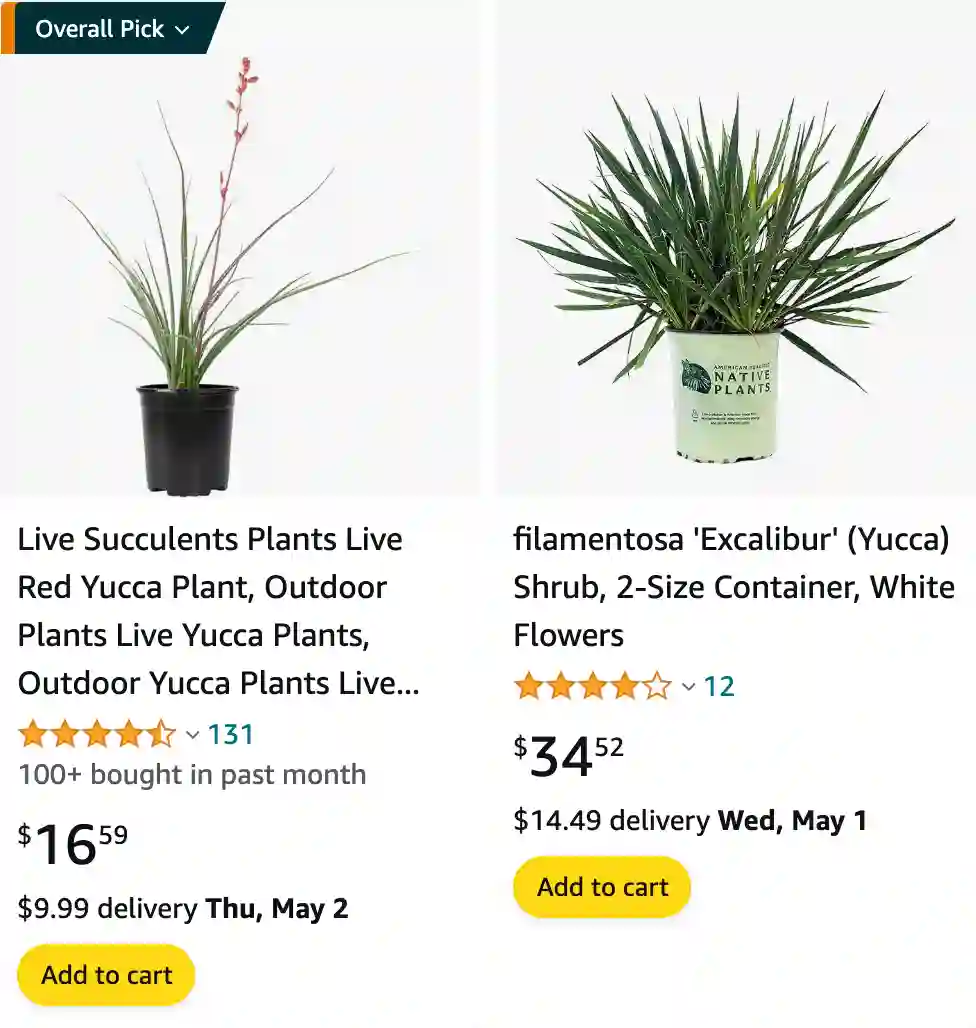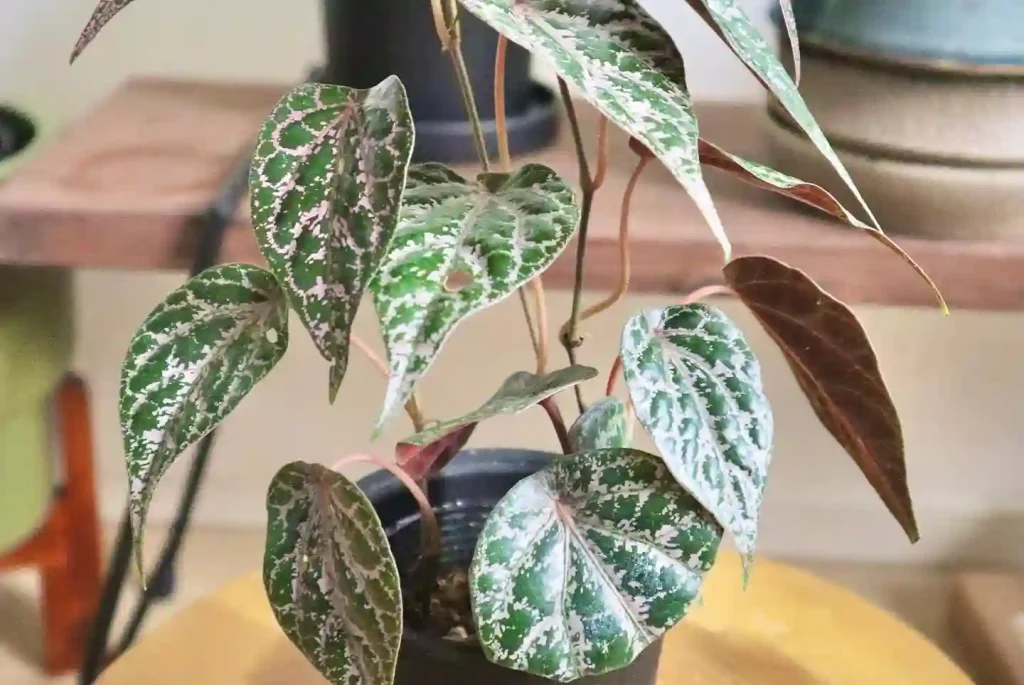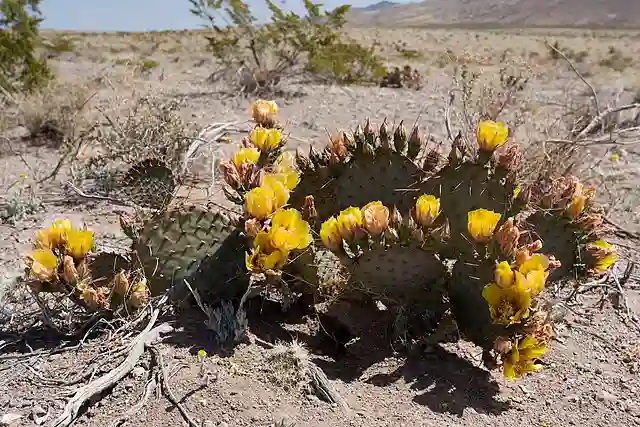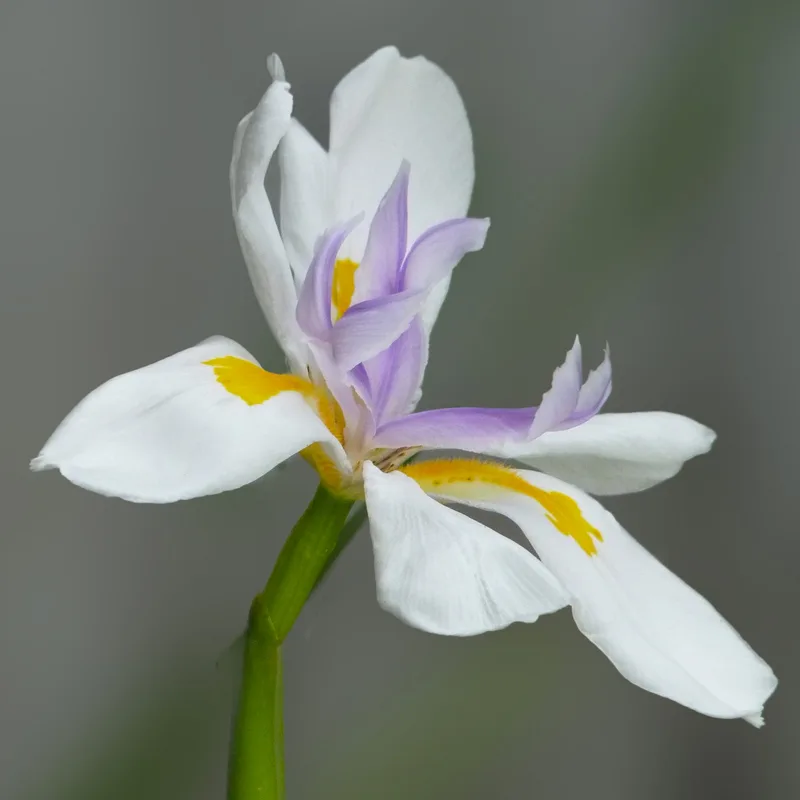
My Fascination with Yuccas
I’ve always been drawn to the desert. Something about the stark beauty, the resilience of life clinging to existence in such harsh conditions, it speaks to me. And few plants embody that desert spirit quite like the Yucca. Maybe it’s their sword-like leaves, sharp and ready to defend themselves, or maybe it’s the way they thrust those magnificent flower stalks skyward, like a beacon of defiance in the face of the relentless sun. Whatever it is, Yuccas fascinate me.
Yuccas belong to the Asparagaceae family, and they’re native to the hot, dry parts of the Americas and the Caribbean. They’re succulents, which means they store water in their thick leaves, stems, and even roots, allowing them to thrive where other plants wither. This incredible adaptation is just one of the things that makes them so captivating.
Diverse Forms of the Yucca
What truly amazes me is the sheer diversity within the Yucca genus. Some species, like the Joshua Tree (Yucca brevifolia), stand tall and branched, like sentinels guarding the desert landscape. Others, like Yucca filamentosa, hug the ground, forming rosettes of spiky leaves that look like something out of a prehistoric world.
Here’s a list of Yucca species:
- Yucca aloifolia L.
- Yucca angustissima Engelm. ex Trel.
- Yucca arkansana Trel.
- Yucca baccata Torr. Plant FAQs: Banana Yucca – Yucca Baccata
- Yucca baileyi Wooton & Standl.
- Yucca brevifolia Engelm. Plant FAQs: Yucca Brevifolia – Joshua Tree
- Yucca campestris McKelvey
- Yucca capensis L.W.Lenz
- Yucca carnerosana (Trel.) McKelvey
- Yucca cernua E.L.Keith
- Yucca coahuilensis Matuda & I.Piña
- Yucca constricta Buckley
- Yucca decipiens Trel.
- Yucca declinata Laferr.
- Yucca desmetiana Baker
- Yucca elata (Engelm.) Engelm. Plant FAQs: Yucca Elata
- Yucca endlichiana Trel.
- Yucca faxoniana (Trel.) Sarg. Plant FAQs: Faxon Yucca – Yucca Faxoniana
- Yucca feeanoukiae Hochstätter
- Yucca filamentosa L.
- Yucca filifera Chabaud
- Yucca flaccida Haw. Plant FAQs: Yucca Flaccida – Adam’s Needle
- Yucca gigantea Lem. Plant FAQs: Yucca Gigantea – Giant Yucca
- Yucca glauca Nutt.
- Yucca gloriosa L.
- Yucca grandiflora Gentry
- Yucca harrimaniae Trel.
- Yucca intermedia McKelvey
- Yucca jaliscensis (Trel.) Trel.
- Yucca lacandonica Gómez Pompa & J.Valdés
- Yucca linearifolia Clary
- Yucca luminosa ined.
- Yucca madrensis Gentry
- Yucca mixtecana García-Mend.
- Yucca muscipula Ayala-Hern., Ríos-Gómez, E.Solano & García-Mend.
- Yucca necopina Shinners
- Yucca neomexicana Wooton & Standl.
- Yucca pallida McKelvey Plant FAQs: Yucca Pallida
- Yucca periculosa Baker
- Yucca pinicola Zamudio
- Yucca potosina Rzed.
- Yucca queretaroensis Piña Luján
- Yucca × quinnarjenii Hochstätter
- Yucca reverchonii Trel.
- Yucca rostrata Engelm. ex Trel. Plant FAQs: Yucca Rostrata
- Yucca rupicola Scheele Plant FAQs: Yucca Rupicola – Twistleaf Yucca
- Yucca schidigera Roezl ex Ortgies
- Yucca × schottii Engelm.
- Yucca sterilis (Neese & S.L.Welsh) S.L.Welsh & L.C.Higgins
- Yucca tenuistyla Trel.
- Yucca thompsoniana Trel. Plant FAQs: Yucca Thompsoniana – Thompson’s Yucca
- Yucca treculiana Carrière
- Yucca utahensis McKelvey
- Yucca valida Brandegee
Can dogs eat yucca?
I’ve never personally fed my dog yucca, but I’ve heard mixed opinions on whether it’s safe for them. Some sources say that certain parts of the yucca plant can be toxic to dogs, while others claim that small amounts of cooked yucca root might be okay as an occasional treat. Personally, I err on the side of caution when it comes to feeding my furry friend anything outside of their regular diet, so I prefer to stick with vet-approved snacks to ensure their safety and well-being. If I ever have doubts, I always consult with my vet before introducing any new food into my dog’s diet.
Is yucca cane toxic to cats?
I haven’t had personal experience with yucca cane and cats, but from what I’ve researched and heard from other pet owners, it’s generally considered toxic to cats. Yucca contains compounds that can cause gastrointestinal upset and even more severe symptoms if ingested by cats. As a cat owner, I prioritize keeping my feline friend safe, so I make sure to keep any potentially harmful plants out of reach and opt for cat-friendly alternatives for indoor greenery. It’s always better to be safe than sorry when it comes to the health of our beloved pets.
How to pronounce yucca?
The pronunciation of “yucca” can vary slightly depending on regional accents, but generally, it’s pronounced as “YUH-kuh.” The emphasis is usually placed on the first syllable, with a short “uh” sound followed by a slightly longer “kuh” sound. It’s a straightforward pronunciation once you get the hang of it!
What does a yucca plant look like?
A yucca plant typically has long, narrow leaves that are pointed at the tips and arranged in a rosette or cluster pattern. The leaves are often stiff and rigid, with a waxy texture. Depending on the species, the leaves may be green, blue-green, or variegated with stripes or patterns. Some yucca species also produce tall flower stalks with white or cream-colored flowers, especially in the spring or summer. Overall, yucca plants have a distinctive desert-like appearance, with a striking and architectural quality that adds a unique touch to any landscape or indoor setting.
Can you eat yucca?
Yes, you can eat yucca, specifically the root of the plant. Yucca root, also known as cassava or manioc, is a starchy tuber commonly consumed in various cuisines around the world. It’s a versatile ingredient that can be boiled, fried, roasted, or mashed, similar to potatoes. Yucca root is a staple food in many tropical regions and is prized for its nutty flavor and fluffy texture when cooked. However, it’s important to note that certain precautions should be taken when preparing yucca root, as it contains naturally occurring toxins that must be removed through proper cooking methods before consumption.
How often do yucca plants bloom?
Yucca plants typically bloom once a year, although the exact timing can vary depending on factors such as the species of yucca, growing conditions, and climate. Generally, yucca plants produce flowers in the spring or summer months. The bloom period can last several weeks to a couple of months, during which the plant’s tall flower stalks are adorned with beautiful white or cream-colored flowers. After blooming, the plant may enter a period of rest before producing flowers again the following year. However, some yucca species may bloom more sporadically or take longer intervals between blooming cycles.
How often water yucca?
In my experience, yucca plants are quite resilient and don’t require frequent watering. I typically water my yucca plant every 2-3 weeks during the growing season, which is usually spring and summer. During the dormant season in fall and winter, I reduce watering to about once a month or even less, allowing the soil to dry out between waterings. It’s essential to avoid overwatering yucca plants, as they are susceptible to root rot if their soil remains consistently soggy. I always make sure to check the soil moisture level before watering and adjust my watering frequency based on the plant’s specific needs and environmental conditions.
How to transplant a yucca plant?
Transplanting a yucca plant can be a straightforward process if done carefully. First, I choose a new location for my yucca plant that receives plenty of sunlight and has well-draining soil. Then, I dig a hole in the new spot that’s slightly larger than the root ball of the yucca plant. Next, I gently dig around the base of the yucca, being careful not to damage the roots. Once the plant is loosened from the soil, I carefully lift it out, making sure to support the root ball. I then place the yucca into the prepared hole, ensuring that it’s positioned at the same depth as it was in its previous location. After backfilling the hole with soil, I water the newly transplanted yucca thoroughly to help settle the soil around the roots. Finally, I monitor the plant closely in the following weeks to ensure it adjusts well to its new environment, watering as needed and providing any additional care it may require.
Is yucca edible?
Yes, parts of the yucca plant are edible, particularly the root. Yucca root, also known as cassava or manioc, is a staple food in many cultures around the world. It is rich in carbohydrates and can be prepared in various ways, such as boiling, frying, or roasting. However, it’s important to note that yucca root contains naturally occurring toxins that must be removed through proper cooking methods before consumption. Additionally, while the root is edible, other parts of the yucca plant, such as the leaves and flowers, are not typically consumed and may even be toxic. Therefore, it’s essential to exercise caution and ensure that only the edible parts of the plant are prepared and consumed safely.
Is yucca a cactus?
Yucca plants are not technically classified as cacti, but they are often associated with desert landscapes like cacti. They belong to the family Asparagaceae and are native to arid regions of North and Central America. While yuccas share some similarities with cacti, such as their ability to withstand dry conditions and their distinctive appearance, they belong to a different botanical group. Unlike cacti, yucca plants typically have longer, narrow leaves arranged in a rosette pattern and produce tall flower stalks adorned with white or cream-colored flowers. Despite these differences, yuccas and cacti are often found growing together in similar environments and are both admired for their resilience and unique beauty.
Is yucca gluten free?
Yes, yucca itself is gluten-free. Yucca is a starchy root vegetable that is naturally free from gluten, making it suitable for those who need to avoid gluten in their diet due to celiac disease, gluten sensitivity, or other reasons. However, it’s essential to be cautious when consuming processed yucca products or dishes that contain yucca, as other ingredients added to these products could potentially contain gluten. As always, it’s best to check ingredient labels and ask about preparation methods to ensure that yucca dishes remain gluten-free.
Will bleach kill yucca roots?
While bleach is an effective disinfectant, it’s not typically recommended for killing yucca roots or other plant roots. Yucca roots can be quite resilient, and using bleach to kill them may not be effective and could potentially harm surrounding vegetation or soil organisms. Additionally, bleach is a harsh chemical that can have adverse effects on the environment. Instead, if you’re looking to remove yucca roots, it’s usually best to physically dig them out or use a herbicide specifically designed for woody plants, following the manufacturer’s instructions carefully to minimize environmental impact.
Is yucca healthier than potatoes?
Both yucca and potatoes have their own nutritional benefits and can be part of a healthy diet when consumed in moderation. Yucca root is lower in calories and carbohydrates compared to potatoes, making it a potentially better option for those watching their calorie or carbohydrate intake. It also contains dietary fiber, vitamin C, and various minerals like potassium and manganese. On the other hand, potatoes are a good source of vitamin C, potassium, and vitamin B6, but they are higher in carbohydrates and calories compared to yucca. Ultimately, the healthiness of yucca versus potatoes depends on individual dietary needs, preferences, and how they are prepared and consumed as part of a balanced diet.
Is yucca keto?
Yucca root can be incorporated into a keto diet in moderation, but it’s important to be mindful of its carbohydrate content. While yucca root is lower in carbohydrates compared to some other starchy vegetables like potatoes, it still contains a moderate amount of carbs, which may need to be accounted for when following a strict ketogenic diet. However, if consumed in appropriate portion sizes and as part of a well-balanced keto meal plan, yucca root can be included as a source of healthy, complex carbohydrates. As always, it’s essential to consider individual dietary needs and goals when determining whether yucca fits into a keto diet.
Where to buy yucca plants?
Yucca plants are commonly available for purchase at various places, depending on your preferences and location. You can find yucca plants at local nurseries, garden centers, or home improvement stores that have a gardening section. Additionally, online retailers and plant nurseries often offer a wide selection of yucca plants for purchase, allowing you to browse and order from the comfort of your own home. When buying yucca plants, it’s essential to choose healthy specimens with strong root systems and vibrant foliage to ensure they thrive in their new environment.
Are yucca chips healthy?
Yucca chips can be a healthier alternative to traditional potato chips, especially if they are baked or air-fried rather than deep-fried. Yucca root itself is lower in calories and carbohydrates compared to potatoes, and it contains some beneficial nutrients like fiber, vitamin C, and various minerals. However, it’s important to consider how the yucca chips are prepared and seasoned. If they are heavily processed, coated in unhealthy oils, or loaded with salt and artificial flavorings, they may not be as healthy. Opting for homemade or minimally processed yucca chips with simple seasonings can be a better choice for those looking for a healthier snack option. As with any snack, moderation is key, and it’s essential to balance yucca chips with other nutritious foods as part of a well-rounded diet.
My Personal Connection
I’ve been fortunate enough to encounter Yuccas in their natural habitat, hiking through the deserts of the American Southwest. Standing in the shadow of a Joshua Tree, or watching the sun set over a field of blooming Yuccas, is an experience I’ll never forget. These plants are a symbol of resilience, adaptation, and the enduring beauty of the natural world. They remind me that even in the harshest environments, life finds a way to flourish.
If i die, water my plants!



